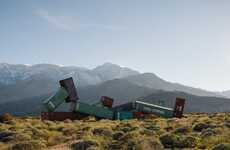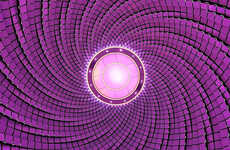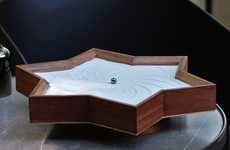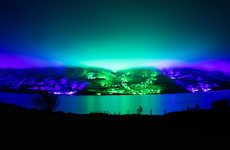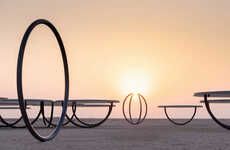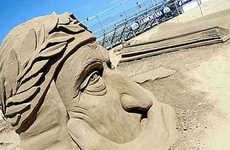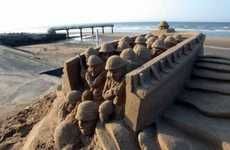
World's Largest Human-Made Art by Jim Denevan
lourdes sanchez bayas — July 3, 2008 — Art & Design
References: jimdenevan & likecool
Jim Denevan is a Santa Cruz, CA-based artist who makes freehand temporary drawings in sand using only a stick and a rake. Working up to seven hours and walking long distances to work on his drawings, Denevan completed what has been identified as the largest human-made art on earth.
Located in Nevada, this drawing is three miles across, and it reportedly took 100 of miles of walking to draw the pattern.
Denevan, who is a chef by profession, creates simple geometric figures in the dry sand as a kind of temporary sculpture. Many of his drawings are done by the water and they are then, sadly, washed away by the rising tides.
Located in Nevada, this drawing is three miles across, and it reportedly took 100 of miles of walking to draw the pattern.
Denevan, who is a chef by profession, creates simple geometric figures in the dry sand as a kind of temporary sculpture. Many of his drawings are done by the water and they are then, sadly, washed away by the rising tides.
Trend Themes
1. Temporary Art Installations - Creating large-scale temporary art installations using natural materials can provide unique and memorable experiences for viewers and opportunities for artists to experiment with the boundaries of their art form.
2. Ephemeral Land Art - Exploring the intersection of art and nature through the creation of temporary, large-scale land art can inspire a deeper connection to the environment and promote sustainable art practices.
3. Experimental Sculpture Techniques - Pushing the boundaries of traditional sculpture techniques to create large, freehand sculptures using minimal tools and natural materials can lead to innovative and visually stunning creations.
Industry Implications
1. Art - Artists, art curators, and art institutions can explore the potential of creating temporary art installations and promoting the work of artists who experiment with natural materials and large-scale sculptures.
2. Tourism - Destinations can promote unique and temporary art installations to attract tourists and provide them with a memorable and immersive cultural experience.
3. Environmental Conservation - Environmental organizations can partner with artists to promote sustainable art practices and inspire a deeper connection to the environment through the creation of temporary land art installations.
4
Score
Popularity
Activity
Freshness


